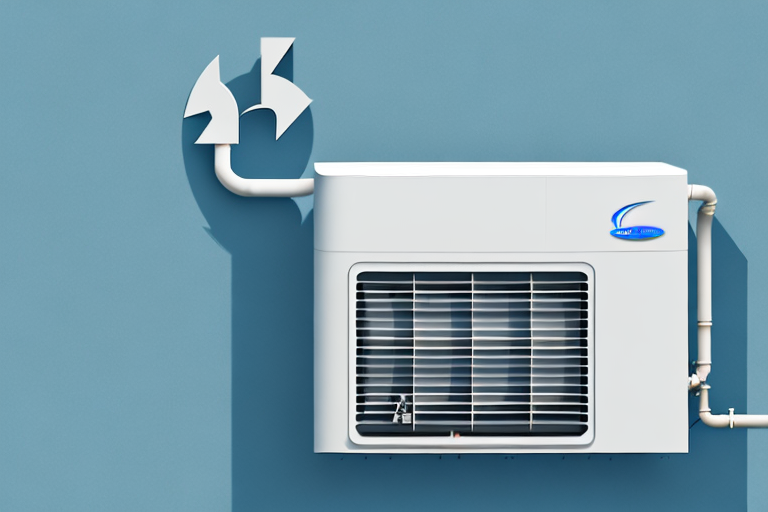

Air conditioning is an essential part of modern living, providing much-needed comfort during the warmer months and, in some cases, throughout the year. However, when it comes time to choose, install, or maintain an air conditioning system, homeowners are often confronted with a barrage of technical terms and jargon that can be confusing. With over 25 years of experience in the industry, AAC is well-versed in all things related to air conditioning, from installation to maintenance, specialising in top-rated models from brands like Daikin, Fujitsu, and Panasonic. This blog aims to demystify some of the most common air conditioning terms, making it easier for homeowners to make informed decisions about their cooling needs.
BTU measures the amount of heat required to raise the temperature of one pound of water by one degree Fahrenheit. In air conditioning, it’s used to quantify the cooling capacity of a unit. The higher the BTU rating, the more powerful the air conditioner, capable of cooling larger spaces.
SEER is a measure of the efficiency of an air conditioning unit over a typical cooling season. It’s calculated by dividing the cooling output (in BTUs) by the total electric energy input (in watt-hours) during the same period. Higher SEER ratings indicate greater energy efficiency, leading to lower electricity bills and reduced environmental impact.
Inverter technology allows the compressor within the air conditioning unit to operate at variable speeds, adjusting the cooling or heating output as needed. This technology improves energy efficiency and comfort by maintaining a more consistent temperature and reducing the system’s operational noise.
A refrigerant is a substance used in air conditioning systems to absorb heat from the indoor air and release it outside, effectively cooling the indoor space. Common refrigerants include R-22 (being phased out due to its environmental impact) and R-410A, which is more environmentally friendly.
A split system consists of two main components: an outdoor unit containing the compressor and condenser, and an indoor unit containing the evaporator coil and air handler. This configuration is common in residential settings, offering efficient cooling without the need for ductwork.
Ductless mini-splits are a type of split system that does not require ductwork, making them ideal for older homes or extensions where installing ducts is impractical. They consist of an outdoor unit connected to one or more indoor units, providing targeted cooling (and heating) to specific areas.
HVAC is a broad term that encompasses the various systems used for heating, ventilating, and air conditioning buildings. It covers a wide range of technologies and equipment designed to control the temperature, humidity, and air quality in indoor spaces.
An air handler is a component of the air conditioning system that circulates and regulates the air. Located inside the home, it typically consists of a blower, heating and cooling elements, filter racks, and dampers. It’s responsible for moving conditioned air throughout the building.
The condenser coil is part of the outdoor unit of an air conditioning system, where the refrigerant releases the absorbed heat to the outside air. It plays a crucial role in the cooling process by changing the refrigerant from a gas to a liquid.
Located in the indoor unit, the evaporator coil is where the refrigerant absorbs heat from the indoor air, cooling it before it’s circulated back into the room. This component is essential for the air conditioning process.
1. How do I know what size air conditioner I need for my home?
The size of the air conditioner you need is determined by the cooling capacity required for your space, measured in BTUs. A professional can assess your home’s size, layout, and other factors to recommend the appropriate size.
2. What’s the difference between a split system and a ductless mini-split?
Both are types of split systems, but a ductless mini-split does not require ductwork. It’s ideal for cooling specific areas or rooms in the home without the need for extensive installation work.
3. Why is the SEER rating important?
The SEER rating is important because it measures the energy efficiency of an air conditioning unit. A higher SEER rating means the unit uses less energy to cool your home, leading to lower utility bills and less environmental impact.
4. Can I install an air conditioning system myself?
While some DIY enthusiasts might consider installing an air conditioning system, professional installation is recommended to ensure efficiency, reliability, and safety. Improper installation can lead to performance issues and increased energy costs.
5. How often should my air conditioning system be serviced?
It’s recommended to have your air conditioning system serviced at least once a year to ensure it’s running efficiently and to prevent any potential issues. Regular maintenance can extend the life of your system and improve its performance.
6. What is inverter technology, and why is it beneficial?
Inverter technology allows the air conditioning system to adjust its compressor speed dynamically, providing precise cooling or heating as needed. This results in better energy efficiency, reduced noise, and greater comfort compared to traditional systems.
Understanding these common air conditioning terms can help homeowners navigate the process of choosing, installing, and maintaining their cooling systems more effectively. With this knowledge, you can communicate more confidently with professionals and make decisions that best suit your comfort and budgetary needs. At AAC, we’re here to provide expert advice and installation services, ensuring you get the most out of your air conditioning investment.


Contact us to arrange your free survey and quote. We'll arrange for one of our full-qualified team to visit you at a convenient time.
Contact Us
Read more about air conditioning and how to get the most out of it.
 Read More
Read More Read More
Read More Read More
Read MoreContact us using the details below or fill out the form and we'll be straight in touch.







Find out more about AAC Group and the complementary services we offer: